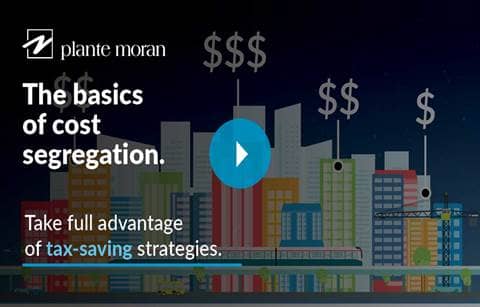Just eight years removed from a U.S. construction peak whose fortunes were eroded by a sustained recession, the construction industry in Michigan is cautiously optimistic that the uptick in activity first registered in 2013 will endure. “Things are busy; we expect them to remain so for the next 18 months at least,” said Mike Green, president of John E. Green Company, a mechanical contractor.
Still others are taking a wait-and-see approach, unconvinced that the effects of the recent downturn are behind us. “Is there enough demand to keep things going? Or are we seeing the snake swallow the rat — you notice the bubble, but when it’s past, there’s nothing left,” asked Dennis King, founder of DMKING Consulting.
While two-thirds of respondents indicate an increase in work volume, some express an imbalance of workloads, where fortunes are not shared evenly. “In the contractor community, there’s a gap between the haves and have-nots,” said Steve Dailey, president of The Dailey Company, a third-generation commercial contractor. “There are a lot of guys who are as busy as they’ve ever been, but a lot of contractors are still struggling.”
Nearly all projects are being tested with a lack of skilled labor, a universal shortfall in nearly every trade, which poses critical scheduling challenges. While some maintain the recession is to blame for a mass exodus of tradespeople — “Our construction workforce left the state when things turned bad, and many of the older guys decided to retire early,” Dailey said — others insist the problem is more deep-rooted. “Our country is facing a decline in the number of kids who want to go into these professions,” said John Rakolta Jr., CEO of Walbridge. “We haven’t attracted sufficient people to replenish the Baby Boomer era.”
All insist that the industry must intensify efforts to attract existing tradespeople, while creating a culture within the state that targets and encourages students. “We’ve got to reach out more to schools and colleges to attract people into the skilled trades,” said Tom Broad, president of Midwest Steel.
The stakes are especially high for developers, whose ambitions are tempered by the labor shortage. “As everyone understands, the labor market for construction evaporated and lots of folks left this part of the world,” said Peter Burton, founder of Burton-Katzman and a former president of the Building Industry Association.
In addition to threatening project deadlines, the labor supply constraint has produced an unexpected consequence on costs. “There’s just such a shortage now that it’s hard to get things done, and that adds pressure to pricing,” Burton said. “The economics are now more challenging than ever. We can find the labor, but we have to pay the price … It’s costing us way more to build than it should.”
For developers like Burton, these cost spikes are impacting the types of projects that they elect to pursue. “For example, apartments are in demand, but they’re so expensive to build because of the labor costs,” Burton said. “If that equation remains, you’ll see demand unmet.”
Although cash flow has improved significantly since 2009, it’s still an ongoing challenge, as payables average more than 60 days. “It’s a horrible element to our business,” Green said, “and it presents a barrier to entry for new companies.” Fifty-five percent of survey respondents anticipate the problem to get worse in the next 12 to 18 months, and access to cash can be a struggle. “Lenders have become so strict that it’s slowed down construction kickoffs. For most small- and medium-sized contractors, it bogs things down,” Dailey said.
In an industry defined by family-owned entities, succession planning has emerged as a key strategic issue. “It’s probably overlooked by most contractors and owners until it’s too late,” Dailey said. “The industry could do a lot more to build awareness and educate our leaders.”
While sustainable business practices were ubiquitous in 2013, with 70 percent of contractors engaged in green initiatives, that number dipped to 59 percent in 2015, a case of ROI meets social consciousness. “It’s not on everybody’s priority list … it can’t be forced onto the marketplace,” Green said. “Everybody wants it, but nobody wants to pay a whole lot for it.”
Despite overall signs that point to continued growth, respondents are already trying to stay ahead of the next — indeterminate — downturn, characteristic vigilance for an industry that’s forever marked by volatility. “I’ve been a CEO for 45 years, and 70 percent of my time is consumed by worrying about where my next job is coming from,” Rakolta said. “Every CEO is worrying about the same thing.”
“I’ve never felt that I have more work than I can handle.”





